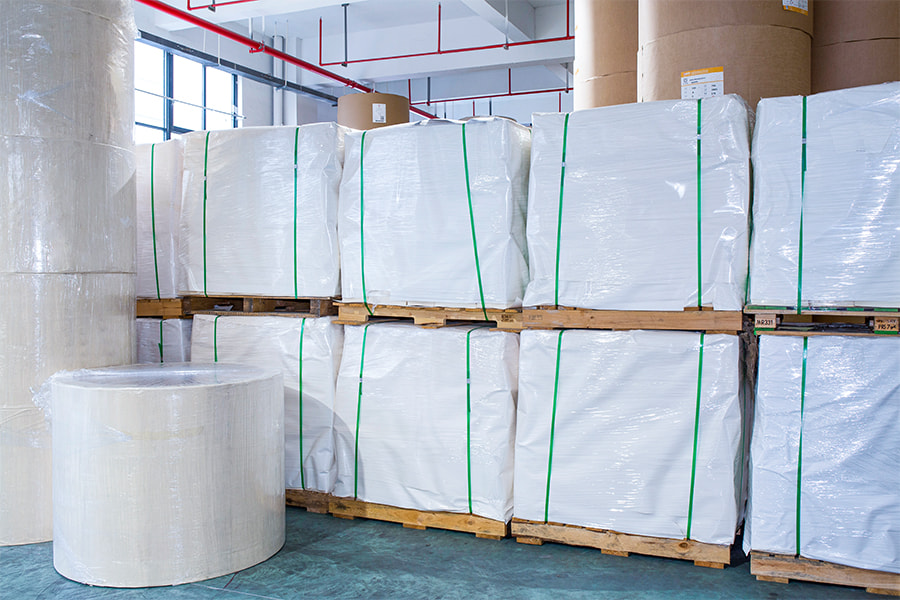The thickness and density of Paper sheet have a significant impact on its performance in packaging and printing. These characteristics are directly related to the strength, rigidity, printing effect of Paper sheet, and durability and performance in actual applications. The following are the specific effects of these two factors on packaging and printing performance:
1. The impact of Paper sheet thickness on packaging and printing
Packaging performance:
Strength and protection: The thickness of Paper sheet directly affects its strength and compression resistance in packaging. Thicker Paper sheet generally has stronger compression and tear resistance, which can provide better protection for packaged products, especially during transportation. For example, thick cardboard is often used for heavy packaging or protection of fragile items.
Anti-compression: Thicker Paper sheet is less likely to deform when subjected to external pressure, which helps prevent damage to packaged items after compression. Thinner Paper sheet may deform under high pressure or stacking, resulting in reduced packaging integrity and product safety.
Adaptability: Thick Paper sheet is more suitable for packaging that requires a certain degree of rigidity and support, such as boxes, gift boxes, etc., while thin Paper sheet is suitable for soft packaging or packaging forms that need to be folded.
Printing effect:
Paper sheet flatness: Thicker Paper sheet is usually flatter and suitable for high-quality printing, especially in color printing, which can provide better image details and color reproduction. Thinner Paper sheet may be easily bent or deformed, resulting in less stable printing than thicker Paper sheet, especially in high-precision printing.
Ink permeability: Thick Paper sheet is usually denser, and ink is easier to stay on its surface and less likely to penetrate, so it is suitable for delicate printing, especially for high-quality text and image output. Thin Paper sheet may absorb ink more easily, which may cause blurred images or uneven colors.
Printing speed: Thicker Paper sheet may cause a larger machine load during printing due to its higher rigidity, affecting the printing speed; while thin Paper sheet is lighter and suitable for high-speed printing, but may require more precise control.
2. The impact of Paper sheet density on packaging and printing
Packaging performance:
Relationship between density and strength: The density of Paper sheet is usually directly related to its thickness, but an increase in density usually means that the fibers of the Paper sheet are tighter and tighter, providing stronger structure and support. High-density Paper sheet (such as cardboard or high-density corrugated cardboard) can provide better pressure resistance and load-bearing capacity, making it very suitable for heavy packaging.
Durability and moisture resistance: High-density Paper sheet usually has better moisture resistance, especially for packaging needs in high humidity environments. High-density Paper sheet can effectively reduce water absorption and avoid deformation and damage of packaging Paper sheet.
Printing effect:
Ink absorption and printing quality: The density of Paper sheet affects its ink absorption. High-density Paper sheet has weak ink absorption due to its dense fibers, which can effectively prevent ink penetration and ensure the clarity of images and text. Therefore, it is suitable for delicate printing work, especially when printing high-quality images and patterns, it can keep the colors bright and the details clear.
Smoothness of Paper sheet: Paper sheet with higher density usually has a smoother surface, which is very important for high-quality color printing, especially for work that requires a smooth surface to present complex patterns. In contrast, low-density Paper sheet may have a rougher surface, which may cause uneven ink during printing and affect the final effect.
Balance between thickness and density: Although thickness and density are usually related, sometimes they are not proportional. High-density Paper sheet may be thin but have very good printing performance, while thicker low-density Paper sheet may be soft and lack sufficient rigidity to support high-quality printing.
3. The combined effect of thickness and density
Adapting to different packaging needs: In packaging applications, the thickness and density of Paper sheet are complementary. Thicker and high-density Paper sheet can provide strong structural support and is suitable for protective packaging, such as shipping boxes, gift boxes, etc.; while thinner and low-density Paper sheet is suitable for packaging materials that require lightness and flexibility, such as flexible packaging, film packaging, etc.
Balance between cost and quality: When choosing Paper sheet, companies usually need to find a balance between thickness, density, cost and performance. For example, thicker and higher-density Paper sheet provides better strength and printing effects, but may also increase production costs; while thinner and lower-density Paper sheet may be more economical, but may compromise on packaging and printing effects.
4. Paper sheet selection for specific applications
High-end packaging: For the packaging of luxury goods and fine goods, high-density and moderately thick Paper sheet is often used, which can provide sufficient strength and high-quality printing effects, making the product more attractive.
Commercial printing: For general commercial printing, such as advertising brochures, magazines, etc., moderate Paper sheet thickness and density are usually selected to balance cost and printing quality.
Food packaging: In food packaging, Paper sheet with appropriate thickness and high density is usually selected to ensure that the packaging Paper sheet will not be damaged by moisture, grease or external force. At the same time, the hygienic safety and waterproofness of food packaging should also be considered.
The thickness and density of Paper sheet have an important impact on the performance of packaging and printing. Thicker Paper sheet provides better protection in packaging and is suitable for heavy objects and high-strength packaging needs; while thinner Paper sheet performs better in efficient printing and is suitable for lightweight packaging. The density of Paper sheet affects its strength, moisture resistance and ink absorption. High-density Paper sheet usually performs better in high-quality printing. Choosing the right thickness and density can find the best balance between cost and function.













 English
English 中文简体
中文简体 عربى
عربى

